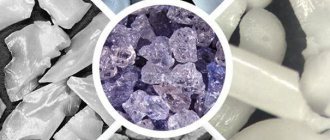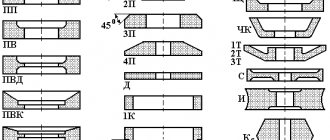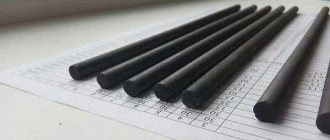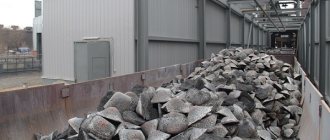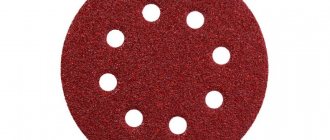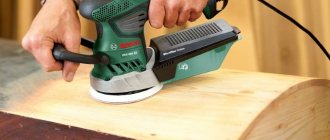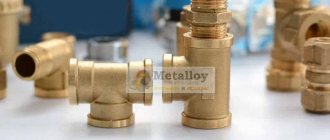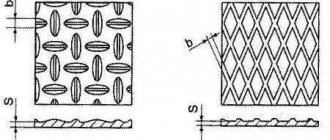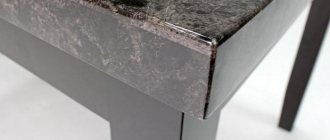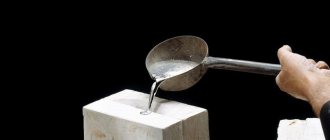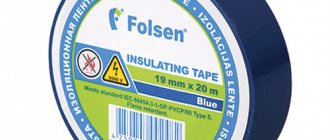Abrasive is the processing of metal, during which it is cut and small sawdust is formed. This processing method has several varieties: polishing, grinding, lapping and honing. This processing method is used to remove various metal defects from its surface, such as dents, cracks, chips, sagging and others. Processing is carried out using various tools, each of which is used depending on the desired result and the condition of the metal product.
What are abrasives
Abrasives
- these are materials characterized by hardness that is superior to other types of materials (even metals). These are solid small particles used in free or bound form (for example, in the form of some form, fixed on a surface, etc.).
Abrasives are designed for mechanical processing of various materials, removing the thinnest layer from them with sharp protrusions of their particles. In fact, any hard structure has abrasive properties in relation to a less hard one. However, only specific types of abrasive materials are used on an industrial scale.
Abrasive processing of materials
Special abrasive tools are made from abrasives. They, unlike blade (metal) ones, do not have a continuous cutting edge. This function is performed by a solid grain structure, each of the grains is a cutter in it. These abrasive particles are bonded to each other with a binder or combined into some kind of product (it can be a wheel, a stone, sandpaper, a brush), and collectively act on the working surface with their cutting edges, removing the finest chips with them (this layer can be as little as several microns).
Abrasive materials are in demand for different types of processing:
- grinding - can be round, flat, circles, tape, and also preliminary and finishing;
- lapping;
- water jet treatment;
- ultrasonic;
- sandblasting;
- polishing (sometimes preliminary, mirror);
- honing (this is the finishing treatment of internal cylindrical parts, such as automobile cylinders);
- superfinishing (involves minimal material removal);
- tumbling (this is the cleaning of small parts from scale, corrosion, burrs, etc.);
- cutting, cutting;
- sharpening
Features of the polishing process
Polishing is considered the final stage of machining parts. With its help you can achieve a mirror metallic shine. Stages of work:
- First of all, the workpiece is processed using grinding machines with coarse abrasives.
- The next step is to reduce the grain size. In this case, it is necessary to take into account the final dimensions of the part so as not to remove the excess layer. Reducing the amount of grit on the sanding surface may leave scratches on the metal surface. Because of this, it is necessary to check abrasive tools.
- To achieve a metallic shine, you need to use GOI paste. It consists of 60% abrasive particles.
When grinding and polishing, it is important to choose a high level of tool resistance to mechanical stress.
When sharpening knives, you can create a high-quality cutting edge using whetstones of different grain sizes and GOI paste. At the same time, the paste has several varieties that differ in the size of the sharp particles.
Abrasive processing of metals is used in various industries. To perform this process, you need to select the right equipment and abrasive material.
Types of abrasives
Abrasive materials differ in different parameters. Thus, they are classified according to their hardness (there are soft, hard, super-hard), their chemical composition, and grain size (they can be large, medium, fine, extra fine).
Based on their origin, abrasives are classified into three types.
1. Natural (or natural) origin. These are sand, garnet, zirconium, etc.
2. Artificial (or synthetic, industrial) origin. These materials are manufactured specifically for abrasive processing. The most common are artificial diamond, silicon carbide, boron, electrocorundum, cubic boron nitrite.
3. Abrasives from production by-products: agricultural residues, slags from metal smelting (for example, nickel slag), from the operation of power plant boilers. These materials are available, have a variety of particle sizes, and are low in cost.
Natural abrasives
Let's look at some of the natural abrasives.
Diamond is the hardest of natural materials, consisting of pure carbon. In nature, it is found, as a rule, in the form of a scattering of crystals. Diamonds can be either jewelry or technical (they are used as abrasives).
Pomegranate
is a mineral consisting of aluminosilicates of lime, magnesia and other impurities. It can be painted in different colors, with the exception of blue. It is used in crushed form: the particles are applied to sandpaper for grinding.
Corundum
consists of crystalline aluminum oxide with impurities, differs in color from bluish to brown. In this case, the hardness of the material decreases with increasing content of iron oxide in it.
Emery
- a mixture of corundum grains with magnesite and other minerals.
Quartz
is silicon oxide in crystalline form. A variety of quartz is flint: it consists of silica and is found in nature in the form of massive rocks.
Pumice
- This is a porous structure of volcanic origin, consisting of silica and alumina.
Chalk
— calcium carbonate, with which fine types of processing (polishing, lapping) are possible.
Types of abrasives used
Blasting offers different application possibilities depending on the abrasive used.
We will not mention fast-wearing abrasive materials in this article. For information, we can remind you that sand is a disposable abrasive, since more than 60% of sand grains turn into dust at the first contact with the surface being treated and, as a result, it loses its abrasive properties. The slag obtained in copper production has 2-3 times of use after separation of the dust fraction.
Due to the emission of so much dust, these abrasives have no future. And, despite the low initial cost, the cost of using them in production is quite high.
Fossil abrasives offered on the market, for example, garnet, have good cleaning properties and fairly long durability (5-6 times of use) with little dust emission, but their price is quite high, which ultimately leads to a high unit cost of cleaning the surface. Therefore, one should not rely on the widespread use of this imported abrasive.
The best solution is to use steel shot, which is not only easily separated from the dust fraction, but also makes it possible to use simple technical solutions in the design of equipment. Corundum is somewhat more expensive, but its use is determined by processing technology (aluminum, zinc, stainless steel).
In the future we will consider: - abrasives for cleaning the surface before painting; — corundum hardness 12 on the 15-point Mohsa scale; — grit steel shot, spherical steel shot (shot); — abrasive materials must be used in closed circulation; - abrasive materials for special applications: - glass beads, plastic abrasives, fruit seeds and other atypical materials.
Abrasive materials from the second group are used for special purposes, for example, removing old films and other contaminants without negatively affecting the substrate (in the case of a thin metal sheet), giving the surface a special look, relieving surface stresses, etc. It should be noted that round steel shot, is used mainly in shot blasting chambers, which operate on the principle of throwing balls towards the surface being processed by impeller blades.
When choosing the type of equipment for cleaning a surface using compressed air, we must take into account the nature of the surface being treated: - if it is necessary to clean a surface made of carbon steel, the choice is simple - you need equipment using steel shot. If surfaces made of aluminum, zinc, or stainless steel are to be processed, the possibility of using corundum should be considered. If surfaces consisting of carbon steel and aluminum, zinc, stainless steel will be processed simultaneously, then it is necessary to take into account which metal predominates and then make decisions about the use of one or another abrasive material: - if the surface of aluminum, zinc or stainless steel predominates, it is advisable to use only corundum; - if carbon steel surfaces predominate, you need to consider equipment that works alternately with steel shot and corundum, or refuse to clean aluminum, zinc and stainless steel surfaces, especially if their quantity is small.
When making decisions about purchasing equipment for processing with corundum, it is necessary to take into account that it is somewhat more expensive for standard equipment (separation and filtration systems) and the durability of the abrasive material is less.
Compressor
The compressor is not an integral part of the blasting device, but its technical parameters have a significant impact on the quality and performance of cleaning. Let's consider 3 main parameters of the compressor: - compressed air performance; — nominal pressure; — quality of compressed air
Compressor performance is its main parameter, which determines cleaning performance. For example, compressors with a power of 0.75 kW and 75 kW develop the same compressed air pressure of 7 bar, but the first has a capacity of 0.11 - 0.12 m3/min, and the second 11.3 - 12.7 m3/min. And only the second will provide the necessary conditions for blast cleaning. Example: At a pressure of 7 bar, 5.3 m3 of compressed air passes through a 9.5 mm nozzle in one minute. If the compressor capacity is only 4.2 m3/min, then we will never get a pressure of 7 bar in the nozzle, but only about 4.9 bar. A decrease in operating pressure by 0.07 bar leads to a decrease in cleaning quality by 1%. In our case, the loss of cleaning performance will be about 45%. The operating pressure when cleaning with steel shot should be between 6.3 – 7 bar. The use of a pressure of more than 7 bar is impractical, as it leads to rapid crushing of the abrasive material without a visible increase in cleaning performance.
When processing with corundum, the compressed air pressure should not exceed 5 bar. The quality of compressed air is determined by its water and oil content. Cleaning from moisture is ensured by a special device - a moisture separator. The amount of oil contained in compressed air depends on the type of compressor and its technical condition. Modern compressors provide compressed air without oil.
The quality of compressed air is especially important when handling metal abrasive materials in closed loops. The presence of oil in compressed air leads to contamination of the abrasive material and transfer of oil to the surface being cleaned. Water can lead to moistening of the abrasive material, malfunction of the abrasive supply valves, and in winter it will lead to freezing of the abrasive and equipment failure.
Operating parameters of the equipment
They depend on the technical design solution. The main parameters include: — ease of use; — the efficiency of ventilation and the degree of purification of the removed air; — current losses of abrasive in the operating cycle; — efficiency of cleaning from pollution; — power in kW; — operating costs; — one-time cost of equipment cleaning.
Ease of use should be understood as the actual operating time of the equipment relative to the calendar; this is determined by the operability of the equipment, the return of the abrasive material to work, the necessary breaks for maintenance, repair work, as well as the accident rate in operation.
Current losses of abrasive material should be understood as stagnant zones in the system of its transportation, where the abrasive lies and requires periodic manual removal. This phenomenon is often observed in mechanical abrasive feed systems.
The efficiency of cleaning affects the amount of fraction removed from the working area during the separation of contaminants (this usually applies to small fractions) and the important fact is whether it is possible to regulate the characteristics of the separator.
The installed power affects the cost of cleaning. The efficiency of ventilation of the working area of the chamber affects the working conditions of operators and their productivity, and therefore the cost of abrasive cleaning. The cost of surface treatment includes all costs of operating the equipment, including depreciation.
Artificial abrasives
The artificial abrasive carborundum was first synthesized in 1891 by scientist-inventor Edward Acheson (USA). Today, there are a lot of abrasives of industrial origin, they are used more widely than natural ones. Let's look at the features of the most common of them.
Electrocorundum is produced by reduction smelting from bauxite in electric furnaces. The color of the abrasive varies from gray to red-brown. The material is used to produce a hard abrasive tool.
Silicon carbide is obtained by reducing silicic acid with carbon. The material is highly brittle and is used in powder form or as a tool for processing glass, porcelain and other fragile structures.
Boron carbide
- the hardest synthetic abrasive, used as a paste for grinding very hard surfaces.
Types of abrasives
To effectively remove a layer of rust or uneven texture from a metal surface, you need to use special abrasives. They are natural and artificial. Such materials have a granular structure. The faction may be different. It is chosen depending on the type of processing. If you need to clean off a thick layer of rust, use an abrasive with large grains; if this is a finishing treatment, use fine grains.
There are two types of abrasive tools:
- Soft - a material whose grains are glued to paper.
- Hard - are grinding wheels, whetstones, musat.
Types of abrasive materials depending on their characteristics:
- Zirconium electrocorundum. Used for grinding steel workpieces. It consists of fine crystals.
- Electrocorundum is normal. Used for grinding cast iron, aluminum, nickel, bronze and high-strength steel. Withstands high temperatures, has increased strength under intense loads.
- Electrocorundum is white. Abrasive with high hardness. The structure is homogeneous. The grains have sharp edges that self-sharpen when processing metal surfaces.
- Electrocorundum chromium titanium. Used for rough processing of metals. It has high strength and hardness.
- Silicon carbide green. An abrasive material with high strength. However, at the same time, the particles are fragile.
- Silicon carbide black. Used for grinding gemstones, marble, glass, cast iron, graphite and bronze.
Before choosing an abrasive, you need to take into account its characteristics, the type of metal being processed and the grain fraction.
Abrasive liquids
The percentage of solids in different abrasive products can vary significantly. Sometimes they are included in a liquid medium - in this case we are talking about an abrasive liquid. Examples are liquid cleaning products (household chemicals), paints containing quartz sand, sand suspensions, caustic sludge, food products (sugar suspensions, chocolate spreads with pieces of nuts), cosmetology (scrubs, abrasive toothpastes), etc. Of course, not all of them are used for surface treatment. Nevertheless, these media have abrasive properties, which must be taken into account when selecting equipment that works with them.
Read more about pumping abrasive liquids
can be read here:
https://www.arkronix.ru/fluid-types/abrazivnye-zhidkosti/
Properties of abrasive materials
Abrasives have a number of important characteristics, or properties. So, their important parameter is hardness. It is determined by the resistance of the material whose surface is subjected to grinding. Thus, the hardest abrasive material on the Mohs scale (named after the German mineral scientist) is diamond (10 points), boron carbide has 9.5 points, corundum, silicon carbide and electrocorundum - 9, quartz - 8, gypsum - 2, talc - 1 point.
Other properties of abrasives are strength, brittleness, and grain size (this is the size and shape of the grinding grain). Thus, the shape of the grains can be isometric (their height, width, thickness are approximately the same), xiphoid, lamellar - this indicator depends on the nature of the abrasive material and the degree of grinding of the original grain.
The abrasive ability of these substances (that is, their performance qualities) is determined by the mass of the layer of material removed during grinding.
Abrasives have the property of self-sharpening: they remain operational due to the formation of new protrusions, cutting edges near the grains during processing.
Basic technologies for abrasive processing of metals
Abrasive processing refers to the physical impact of solid particles of the working part of the tool on the workpiece. The simplest example of abrasive processing is sharpening a knife on a corundum block. The main developed areas of this type of metal processing are cutting and grinding. Moreover, the most highly alloyed metals are easily affected by abrasive materials. To achieve the required accuracy and quality of surface treatment, several technologies for abrasive metal processing are used.
cutting
One of the most common is cutting, an example of how this is implemented can be a conventional angle grinder (Bulgarian), metal cutting with abrasive discs is widely used in modern industry. The main advantage of cutting metal with abrasive materials is fairly high accuracy and speed; the disadvantage is the strong heating of the metal in the cut area, and it is also possible to change the properties of the metal itself. Basic technologies for abrasive processing of metals Water jet cutting
But there are also some kind of unique abrasive cutting systems such as waterjet cutting. From the name it is clear that the process also involves a liquid - water; it is needed to transfer energy and the necessary acceleration to the abrasive particles that directly cut the metal. Plus, water acts as a coolant for the material being processed, which is why the workpiece processed in this way is not exposed to high temperatures that deform the part.
Abrasive grinding
Also very common is abrasive grinding - impact on the surface layer of the metal to give it the necessary evenness and smoothness. For this type of processing, as well as for cutting, abrasive grinding discs are mainly used, which differ from cutting discs in being thicker, since the plane of the disc itself is used for grinding.
Sandblasting
But what about surfaces that do not have smooth planes? This is why there is so-called sandblasting. Its principle is quite simple. Abrasive particles are supplied into a powerful air stream, which, when hitting the surface of the workpiece, leave micro scratches. The quality of the surface with this processing method depends on the particle size and type of abrasive material.
Magnetic abrasive processing of metals
For many, magnetic abrasive processing of metals will seem exotic. Its essence lies in the movement of the workpiece being processed in a mass of abrasive particles held by a magnetic field. By changing the intensity of the magnetic field, you can adjust the processing mode at all stages.
Today, modern industry cannot do without the use of abrasive materials and processing methods. With the development of technological progress, abrasive processing is increasingly used in various industries. To this day, new processing methods are being created to introduce them into technological processes in which abrasive was previously not applicable. This is due to the ease of use of abrasive processing technologies and the availability of consumables. Modern abrasives are able to work well not only with metals, but also with other hard materials. And the wide range of variety of abrasive materials themselves makes it possible to achieve even mirror-like surfaces during processing.
Application of abrasives
People have used abrasives since ancient times. For example, the Mayans in the 9th century. BC e. They decorated their teeth with precious stones, and they drilled holes in them with tubes onto which crushed quartz was applied.
Today, the scope of application of abrasive materials is very wide.
For example, they are indispensable in metal and woodworking, construction. Abrasives are also used in everyday life. So, in every home there is sandpaper, pumice, and nail files (they are also covered with very fine polishing particles). #FORM#
